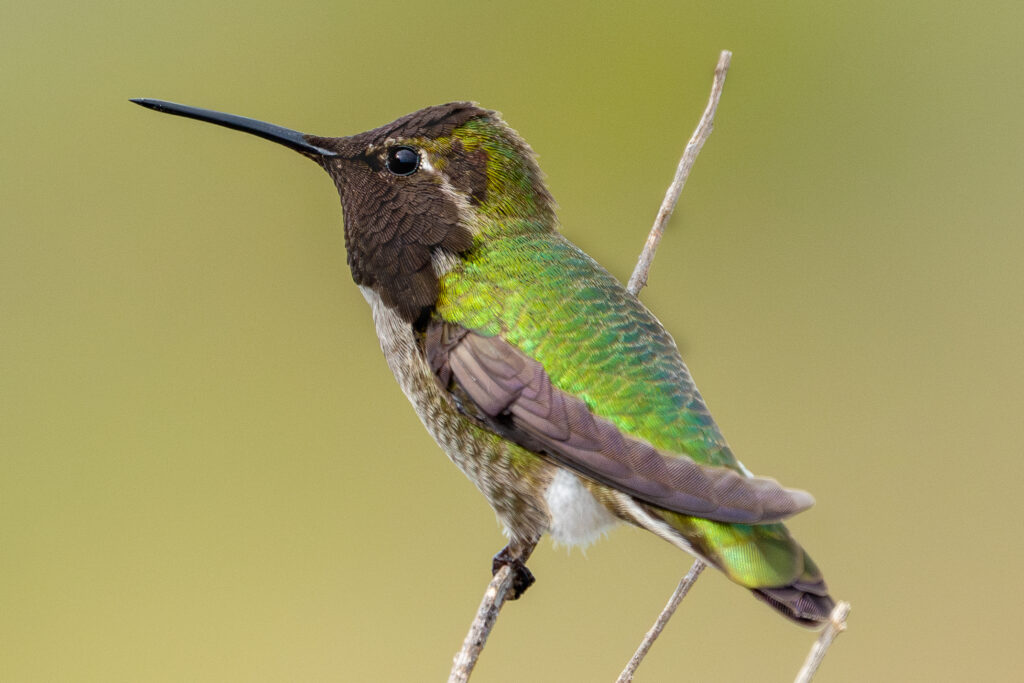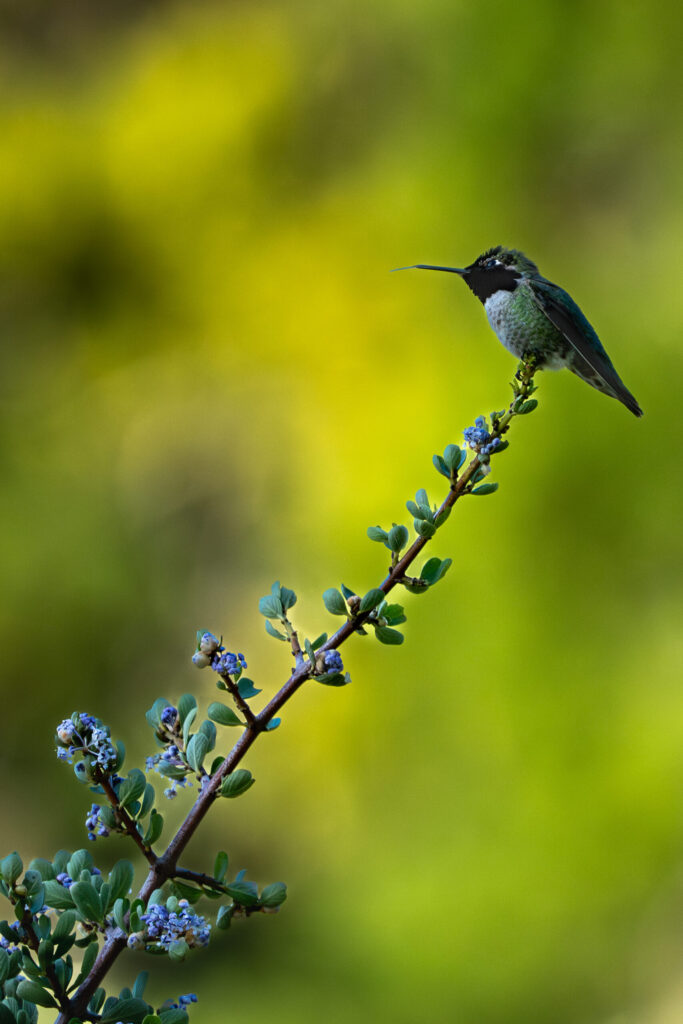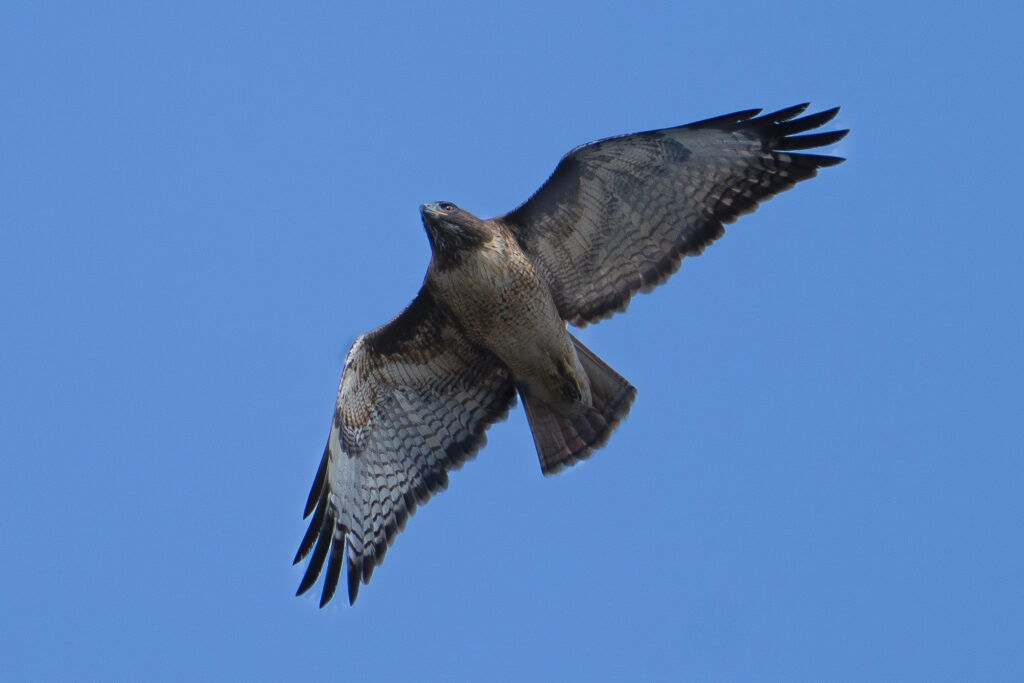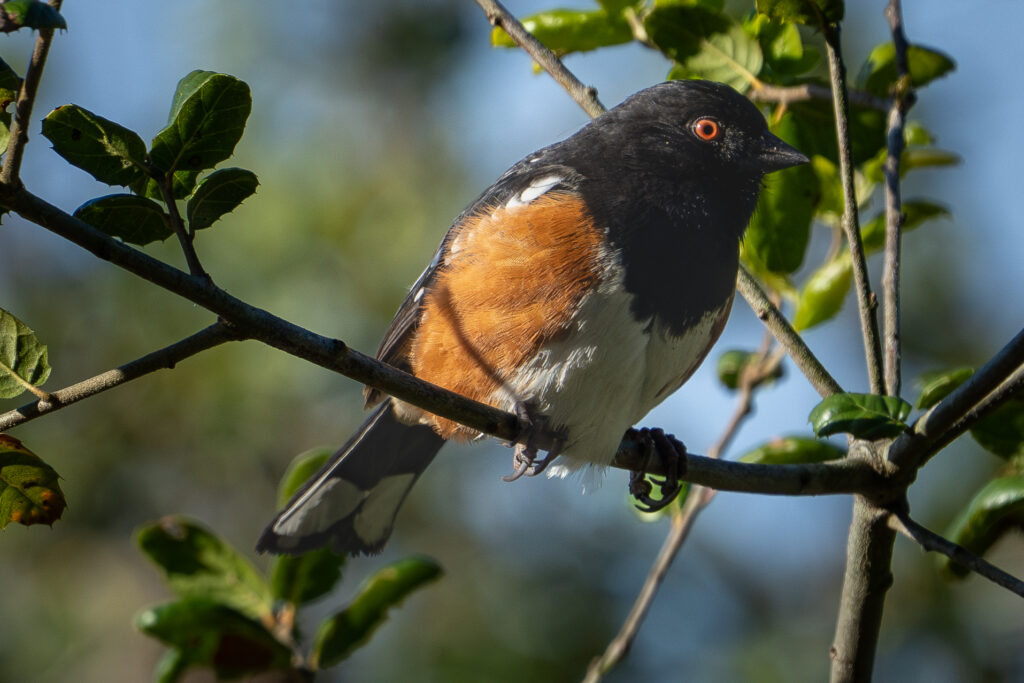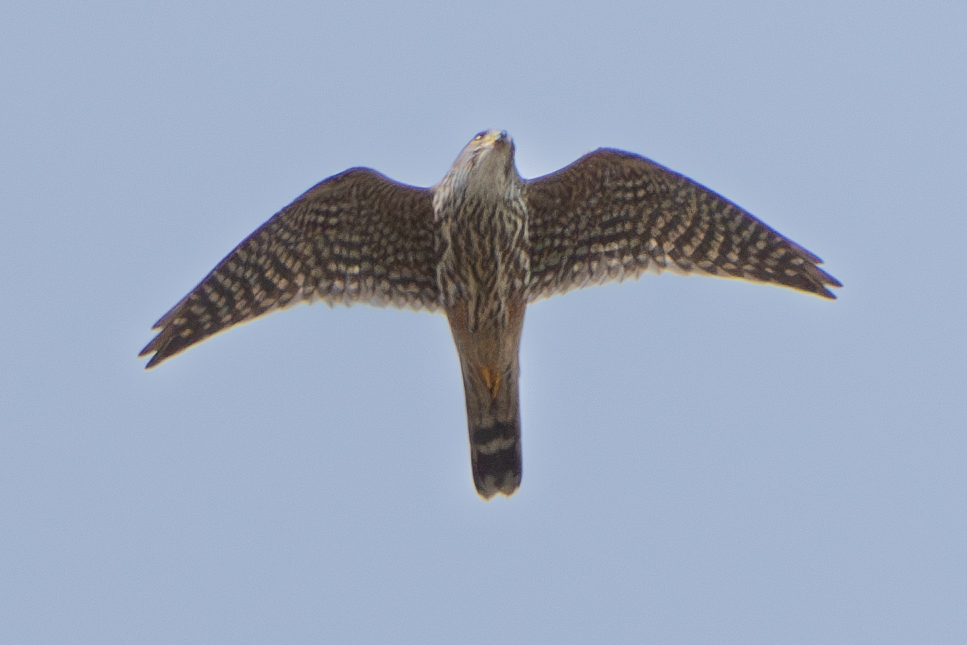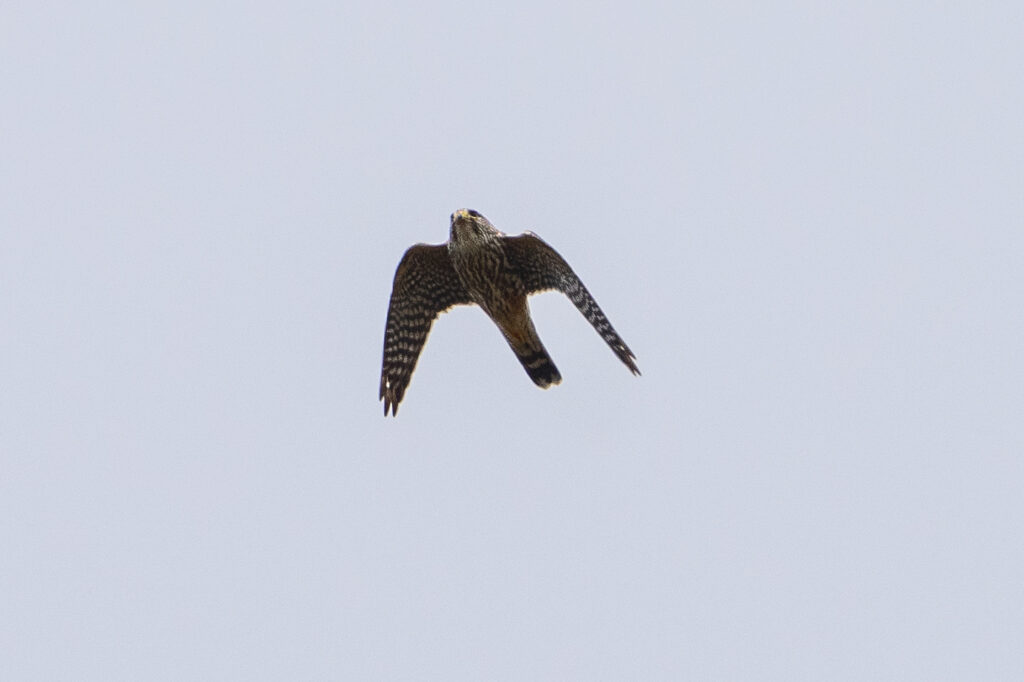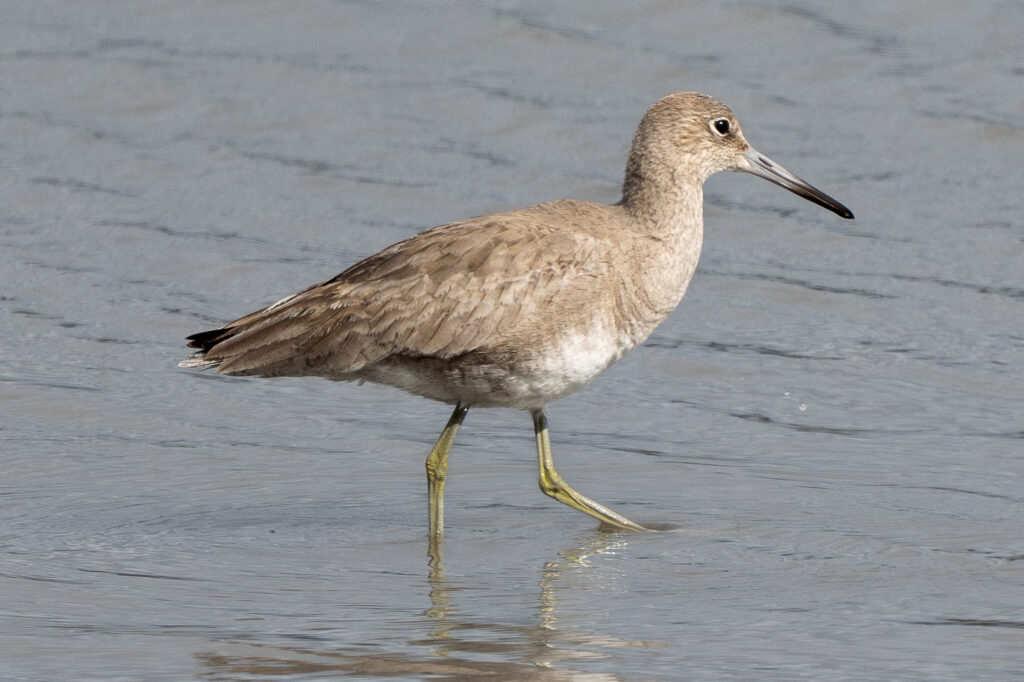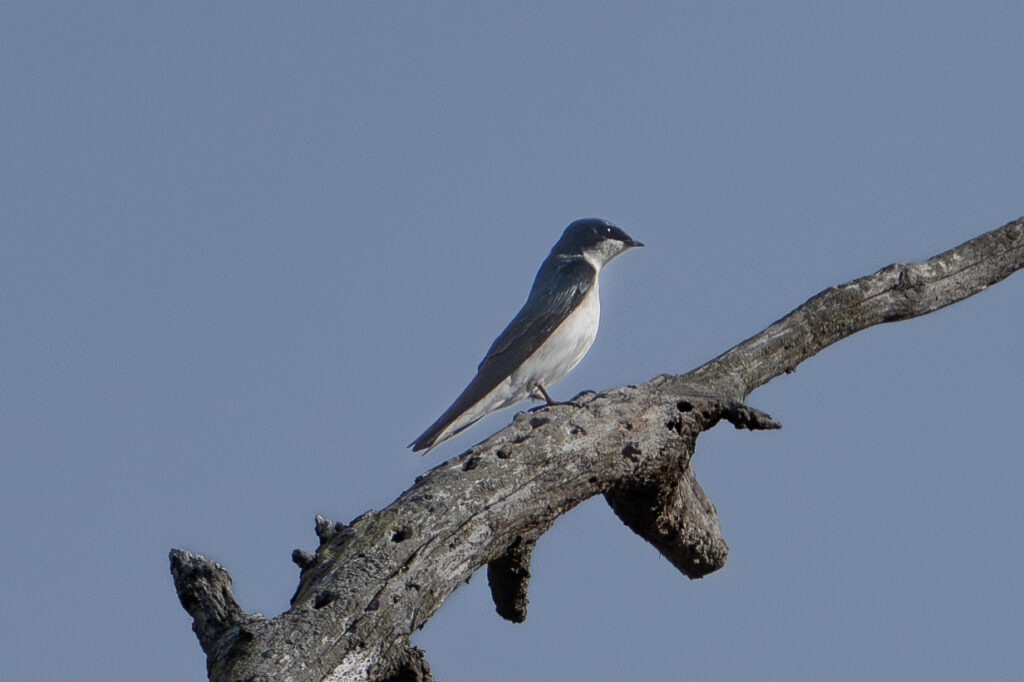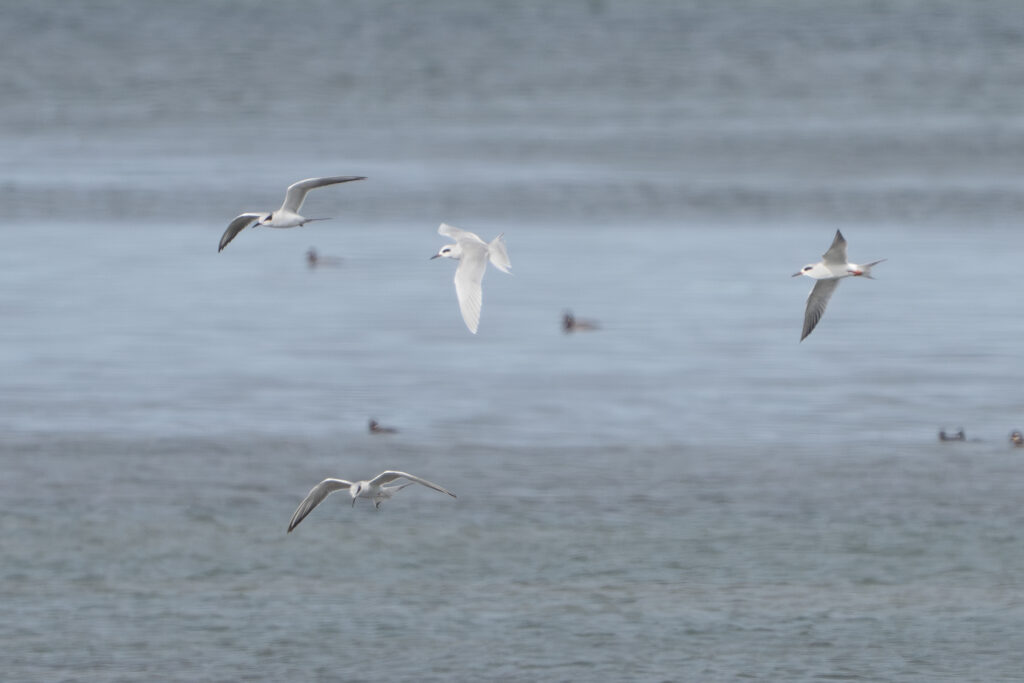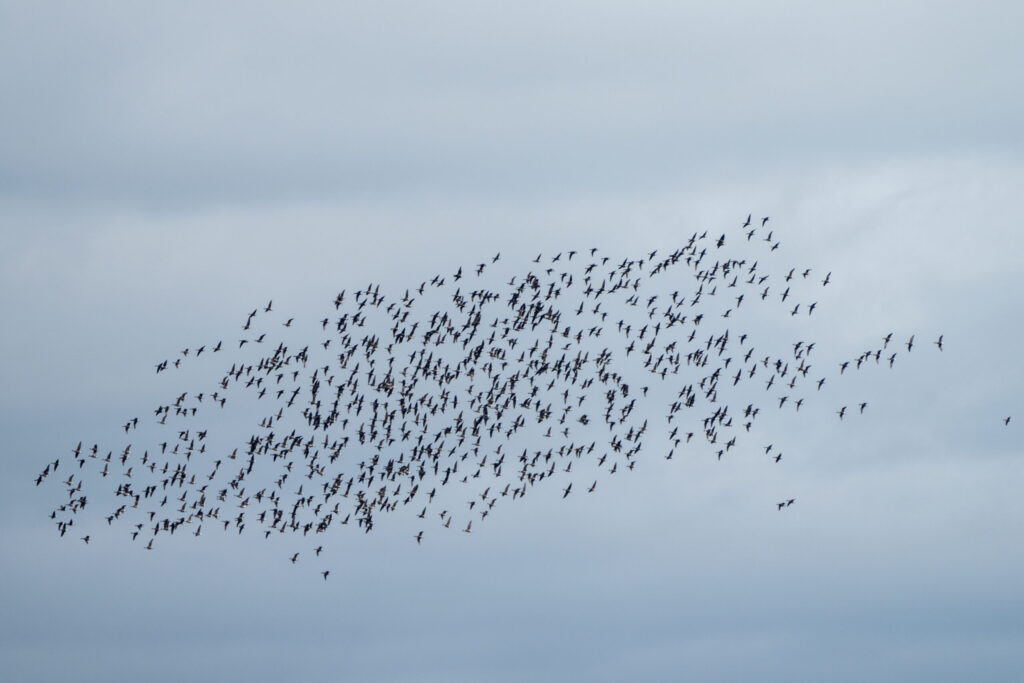The Morro Coast Audubon Society led a field trip to the Sweet Springs nature preserve in Los Osos recently. Highlights of the trip included, naturally, shorebirds and waterbirds.
The most numerous species was the Brant, or burnt barnacle goose. I’m making it up, sort of. The origin of the genus name Brant is unknown; the editors of the Oxford English Dictionary shrug and say “derivation and original application uncertain.” Some etymologists (unnamed by the OED) suggest that it derives from “burnt” or “branded,” which would certainly work, since all subspecies of this goose are dark above; our local population is even darker, called Black Brant since its belly is dark in addition to its back.
Wherever the name came from, we observed over 900 Black Brant foraging in the eelgrass and flying over the bay.
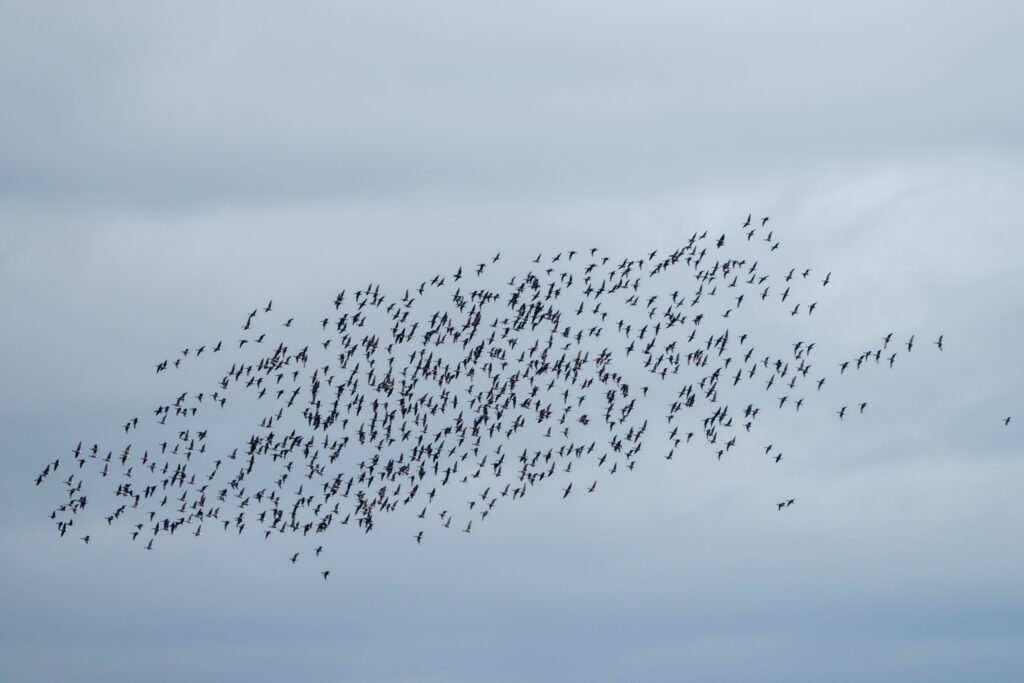
Other birds encountered during the trip were a pair of Red-tailed Hawks (plus a third one that seemed to be an interloper on the pair’s bonding flight), a Merlin that looked so huge (and the light was so indifferent) we all mistook it for a Peregrine Falcon until I processed my images; there were Anna’s Hummingbirds galore, over a dozen Forster’s Terns, hundreds of Least Sandpipers, Marbled Godwits, and Long-billed Curlews, nearly one hundred Ruddy Ducks, dozens of Green-winged Teal, slightly fewer Blue-winged Teal, at least a dozen Northern Shovelers, a few Willets, a few Western Sandpipers, and even the odd Dunlin or two. All told, 50+ species were recorded by the group, which is pretty good for a trip that was almost canceled due to the threat of rain!
Here’s a little gallery of birds I was able to get pix of:
As I mentioned at the beginning, the most numerous species observed was the Brant. It’s also perhaps the most interesting from a conservation point of view here in Morro Bay. There are several subspecies of Brant worldwide; our local population is the Black Brant, Branta bernicla nigricans, which, as you might expect, is the darkest of the subspecies, with a black belly instead of a gray or whitish one. The wintering population (they breed in the Arctic) depends on the substantial eelgrass beds in the bay for their food during their stay here.
Here’s a link to a great article John Roser wrote a few years back about Brant banding and local conservation efforts centered on this keystone species: Morro Bay’s “Black Brant: Monitoring the Status of a Bay Icon.” The article was published in 2018 on the Morro Bay National Estuary Program website. (Coincidentally, my father-in-law was the first manager of the South Slough Reserve up in Coos Bay, Oregon. It was the first unit of the National Estuarine Research Reserve System [NERRS], established back in 1974 and now administered by NOAA–this is not to be confused with the EPA’s National Estuary Program, established in 1987, of which Morro Bay is one. NOAA’s NERRS has 30 sites; EPA’s NEP has only 28. So there!)
In his article, Roser mentions that Brant numbers in the bay are way, way down from historic levels (decades and decades ago–this discussion started in the 1990s, with old-timers mentioning even back then how few Brant wintered there anymore compared to the good old days). Determining exactly why a local population declines is always difficult, but there are many factors, some global and some local, that Roser speculates might be contributing. (As he says, the “population trend at one small part in the flyway can be easy to detect but complicated to explain, especially for such a mobile species. Factors influencing Morro Bay’s Brant population can originate locally or thousands of miles away.”)
It’s certainly true that historic Brant population on the West Coast has fluctuated, but that dates back to the 1950s at least. From the Brant account on Birds of the World: “On the Pacific Coast, a major decrease in use during spring in California (Sedinger et al. 1994) coincided with expansion of the winter range to include the western coast of mainland Mexico during about 1950–1970 (Leopold and Smith 1953, Smith and Jensen 1970), possibly a result of increasing disturbance from hunting in California (Moore and Black 2006a).”
Roser was so concerned about the decline that he began a citizen science program to monitor the banded population of Brant on the bay to try to get some solid data on the wintering population. At roughly the same time that his study began (2007), there was a large decrease in eelgrass acreage in Morro Bay, crashing in 2013 and remaining flat for several years. This is significant because of how heavily the birds rely on this single source of food. From the article on the Brant in Cornell’s online Birds of the World, “Wintering locations are usually characterized by an abundance of native intertidal plants used as forage, particularly the seagrass, Zostera; no other species of goose relies so heavily on a single plant species during the nonbreeding season.”
Since 2018 the eelgrass in the bay has rebounded, either because of or alongside concerted restoration efforts by local conservation groups, including MCAS and the Black Brant Group. I’m unclear on the population trend of Black Brant in that same timeframe, but I’m trying to find out.

